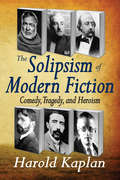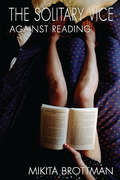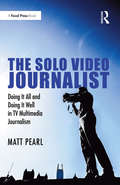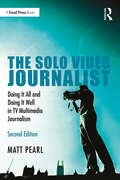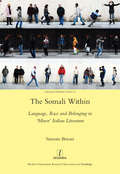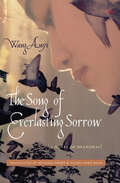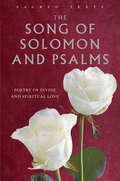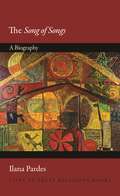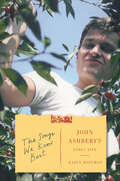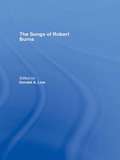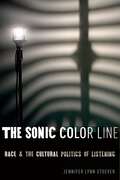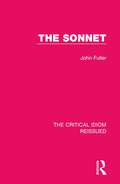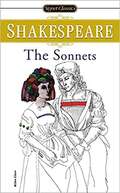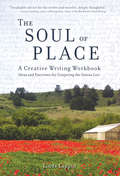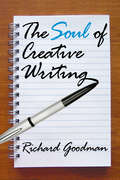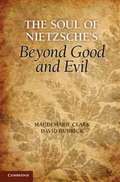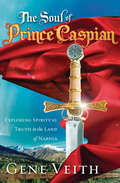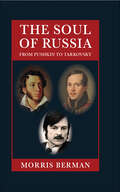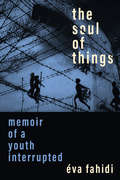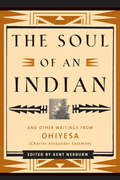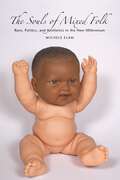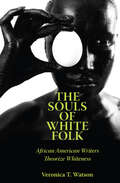- Table View
- List View
The Solipsism of Modern Fiction: Comedy, Tragedy, and Heroism
by Harold KaplanIn 'The Solipsism of Modern Fiction', Harold Kaplan deals with the problem of action and its adequate motive in the modern novel. In the nineteenth and twentieth centuries modern scientific knowledge abandoned the human-centred view of the universe and thus the fictional modes that had been rooted in religion or myth. The result for fiction was a radical skepticism on the part of the protagonist who now appeared as a reflective, self-critical, passive figure lacking the dynamism of the epic hero or religious seeker. One response to the scientific worldview was the naturalism of Zola and his followers in which the action of characters is determined by social or biological forces. Kaplan, however, focuses his study on such novelists as Flaubert, Joyce, Conrad, Faulkner, Lawrence, and Hemingway who dramatised the isolated individual consciousness in contention with the world and with the ambiguity of their own motivations. 'The Solipsism of Modern Fiction' deals with several related topics that grow from one source, the crisis of knowledge in modern intellectual history. The effects of solipsism and of moral passivity, the split consciousness that divides action and understanding, the perspectives of primitive naturalism and stoic naturalism, the variations of the comic mood, and the example of tragedy, are all themes that are dramatised in Kaplan's readings of 'Madame Bovary', 'Light in August', 'Ulysses', 'Lord Jim', and other exemplary modern novels that associate themselves with the problem of self-criticism, knowing, and acting. Written by one of the outstanding literary scholars of our time, this book will inspire new generations of readers and writers.
The Solitary Vice: Against Reading
by Mikita BrottmanMikita Brottman wonders, just why is reading so great? It's a solitary practice, one that takes away from time that could be spent developing important social networking skills. Reading's not required for health, happiness, or a loving family. And, if reading is so important, why are catchy slogans like "Reading Changes Lives" and "Champions Read" needed to hammer the point home? Fearlessly tackling the notion that nonreaders are doomed to lives of despair and mental decay, Brottman makes the case that the value of reading lies not in its ability to ward off Alzheimer's or that it's a pleasant hobby. Rather, she argues that like that other well–known, solitary vice, masturbation, reading is ultimately not an act of pleasure but a tool for self–exploration, one that allows people to see the world through the eyes of others and lets them travel deep into the darkness of the human condition.
The Solo Video Journalist: Doing It All and Doing It Well in TV Multimedia Journalism
by Matt PearlIt is becoming increasingly important for television reporters to be proficient in many, if not all, of the steps in production. The Solo Video Journalist will make handling all these responsibilities seem possible, and do so from the hands-on perspective of a current reporter with years of experience as a multimedia journalist. This book will cover all aspects of multimedia journalism, from planning for a segment, to dressing appropriately for one’s multiple roles, to conducting interviews and editing. The instruction and guidance in this text will help make readers valuable players in their field, and it is filled with real-world examples and advice from current professionals. Whether it be college students learning from the ground up or journalists early in their careers, The Solo Video Journalist ensures they will have all the materials they need to be successful multimedia journalists.
The Solo Video Journalist: Doing It All and Doing It Well in TV Multimedia Journalism
by Matt PearlThe Solo Video Journalist, now in its second edition, offers a comprehensive overview of the solo video reporting process from start to finish. Drawing from years of professional experience in the field, the author covers all aspects of multimedia journalism, from planning for a segment, to dressing appropriately for multiple roles, to conducting interviews, and editing. The book contains interviews with more than a dozen top storytellers from around the United States and offers practical advice for how to succeed in a growing media field. New to this edition are Career Chronicles – chapters that detail the career paths possible for modern journalists – and a fully updated chapter on the importance of building a digital and social media presence. This book is an excellent resource for students learning skills in broadcast, multimedia, backpack, and television journalism, as well as for early-career professionals looking for a back-pocket resource in solo video journalism.
The Somali Within: Language, Race and Belonging in Minor Italian Literature
by Brioni SimoneThe recent histories of Italy and Somalia are closely linked. Italy colonized Somalia from the end of the 19th century to 1941, and held the territory by UN mandate from 1950 to 1960. Italy is also among the destination countries of the Somali diaspora, which increased in 1991 after civil war. Nonetheless, this colonial and postcolonial cultural encounter has often been neglected. Critically evaluating Gilles Deleuze and F�x Guattari�s concept of �minor literature�, as well as drawing on postcolonial literary studies, The Somali Within analyses the processes of linguistic and cultural translation and self-translation, the political engagement with race, gender, class and religious discrimination, and the complex strategies of belonging and unbelonging at work in the literary works in Italian by authors of Somali origins. Brioni proposes that the �minor� Somali Italian connection might offer a major insight into the transnational dimension of contemporary �Italian� literature and �Somali� culture.
The Song of Everlasting Sorrow: A Novel of Shanghai (Weatherhead Books on Asia)
by Anyi WangSet in post-World War II Shanghai, The Song of Everlasting Sorrow follows the adventures of Wang Qiyao, a girl born of the longtong, the crowded, labyrinthine alleys of Shanghai's working-class neighborhoods. Infatuated with the glitz and glamour of 1940s Hollywood, Wang Qiyao seeks fame in the Miss Shanghai beauty pageant, and this fleeting moment of stardom becomes the pinnacle of her life. During the next four decades, Wang Qiyao indulges in the decadent pleasures of pre-liberation Shanghai, secretly playing mahjong during the antirightist Movement and exchanging lovers on the eve of the Cultural Revolution. Surviving the vicissitudes of modern Chinese history, Wang Qiyao emerges in the 1980s as a purveyor of "old Shanghai"—a living incarnation of a new, commodified nostalgia that prizes splendor and sophistication—only to become embroiled in a tragedy that echoes the pulpy Hollywood noirs of her youth. From the violent persecution of communism to the liberalism and openness of the age of reform, this sorrowful tale of old China versus new, of perseverance in the face of adversity, is a timeless rendering of our never-ending quest for transformation and beauty.
The Song of Roland
by Glyn S. BurgessOn 15 August 778 Charlemagne's army was returning from a successful expedition against Saracen Spain when its rearguard was ambushed in a remote Pyrenean pass. Out of this skirmish arose a stirring tale or war, which was recorded in the oldest extant epic poem in French. The Song of Roland, written by an unknown poet, tells of Charlemagne's warrior nephew, Lord of the Breton Marches, who valiantly leads his men into battle against the Saracens, but dies in the massacre, defiant to the end. In majestic verses, the battle becomes a symbolic struggle between Christianity and paganism, while Roland's last stand is the ultimate expression of honour and feudal values of twelfth-century France. Glyn Burgess's lucid translation is designed to assist the reader in understanding the original French of the Chanson de Roland, of which a substantial portion is included as an appendix in this volume. This edition also includes notes and an updated list for further reading.
The Song of Solomon and Psalms
by Gerald BenedictThis is a wonderful collection of some of the best-known and best-loved poetic texts from the Old Testament, as translated in the King James Bible.
The Song of Songs: A Biography (Lives of Great Religious Books #46)
by Ilana PardesAn essential history of the greatest love poem ever writtenThe Song of Songs has been embraced for centuries as the ultimate song of love. But the kind of love readers have found in this ancient poem is strikingly varied. Ilana Pardes invites us to explore the dramatic shift from readings of the Song as a poem on divine love to celebrations of its exuberant account of human love. With a refreshingly nuanced approach, she reveals how allegorical and literal interpretations are inextricably intertwined in the Song's tumultuous life. The body in all its aspects—pleasure and pain, even erotic fervor—is key to many allegorical commentaries. And although the literal, sensual Song thrives in modernity, allegory has not disappeared. New modes of allegory have emerged in modern settings, from the literary and the scholarly to the communal.Offering rare insights into the story of this remarkable poem, Pardes traces a diverse line of passionate readers. She looks at Jewish and Christian interpreters of late antiquity who were engaged in disputes over the Song's allegorical meaning, at medieval Hebrew poets who introduced it into the opulent world of courtly banquets, and at kabbalists who used it as a springboard to the celestial spheres. She shows how feminist critics have marveled at the Song's egalitarian representation of courtship, and how it became a song of America for Walt Whitman, Herman Melville, and Toni Morrison. Throughout these explorations of the Song's reception, Pardes highlights the unparalleled beauty of its audacious language of love.
The Songs We Know Best: John Ashbery's Early Life
by Karin RoffmanThe first biography of an American masterThe Songs We Know Best, the first comprehensive biography of the early life of John Ashbery—the winner of nearly every major American literary award—reveals the unusual ways he drew on the details of his youth to populate the poems that made him one of the most original and unpredictable forces of the last century in arts and letters.Drawing on unpublished correspondence, juvenilia, and childhood diaries as well as more than one hundred hours of conversation with the poet, Karin Roffman offers an insightful portrayal of Ashbery during the twenty-eight years that led up to his stunning debut, Some Trees, chosen by W. H. Auden for the 1955 Yale Younger Poets Prize. Roffman shows how Ashbery’s poetry arose from his early lessons both on the family farm and in 1950s New York City—a bohemian existence that teemed with artistic fervor and radical innovations inspired by Dada and surrealism as well as lifelong friendships with painters and writers such as Frank O’Hara, Jane Freilicher, Nell Blaine, Kenneth Koch, James Schuyler, and Willem de Kooning. Ashbery has a reputation for being enigmatic and playfully elusive, but Roffman’s biography reveals his deft mining of his early life for the flint and tinder from which his provocative later poems grew, producing a body of work that he calls “the experience of experience,” an intertwining of life and art in extraordinarily intimate ways.
The Songs of Robert Burns
by Donald A. LowIn this definitive work for our generation, Donald Low brings together, for the first time, the words and tunes of all Burns' known songs, both `polite' and bawdy. The Songs of Robert Burns were, in their author's eyes, the crown of his achievement as a poet. After years of study and investigation, many hours spent listening to old airs, as he recalled the living, daily, song-life of the people of Scotland, and through the creation of some of the finest lyric poetry produced in the British Isles, Burns' success is beyond doubt.
The Sonic Color Line: Race and the Cultural Politics of Listening (Postmillennial Pop #17)
by Jennifer Lynn StoeverThe unheard history of how race and racism are constructed from sound and maintained through the listening ear. Race is a visual phenomenon, the ability to see “difference.” At least that is what conventional wisdom has lead us to believe. Yet, The Sonic Color Line argues that American ideologies of white supremacy are just as dependent on what we hear—voices, musical taste, volume—as they are on skin color or hair texture. Reinforcing compelling new ideas about the relationship between race and sound with meticulous historical research, Jennifer Lynn Stoever helps us to better understand how sound and listening not only register the racial politics of our world, but actively produce them. Through analysis of the historical traces of sounds of African American performers, Stoever reveals a host of racialized aural representations operating at the level of the unseen—the sonic color line—and exposes the racialized listening practices she figures as “the listening ear.” Using an innovative multimedia archive spanning 100 years of American history (1845-1945) and several artistic genres—the slave narrative, opera, the novel, so-called “dialect stories,” folk and blues, early sound cinema, and radio drama—The Sonic Color Line explores how black thinkers conceived the cultural politics of listening at work during slavery, Reconstruction, and Jim Crow. By amplifying Harriet Jacobs, Frederick Douglass, Elizabeth Taylor Greenfield, Charles Chesnutt, The Fisk Jubilee Singers, Ann Petry, W.E.B. Du Bois, and Lena Horne as agents and theorists of sound, Stoever provides a new perspective on key canonical works in African American literary history. In the process, she radically revises the established historiography of sound studies. The Sonic Color Line sounds out how Americans have created, heard, and resisted “race,” so that we may hear our contemporary world differently.
The Sonnet (The Critical Idiom Reissued #25)
by John FullerFirst published in 1972, this book examines the sonnet, one of the most complex yet accessible of verse forms. It traces its history, concentrating primarily on its technical development, and fully explains the differences between the Italian and English sonnet. The study looks at several different kinds of sonnet, including condensed and expanded sonnets, inverted and tailed sonnets and irregularities of metre and rhyme, and concludes with a survey of the sonnet sequence. This book will be useful to students of prosody and English poetry as well as those concerned with the practice of verse.
The Sonnets
by William Shakespeare Sylvan BarnetThe Signet Classic Shakespeare Series The work of the world’s greatest dramatist edited by outstanding scholars The Sonnets UNIQUE FEATURES OF THE SIGNET CLASSICS SHAKESPEARE • An extensive overview of Shakespeare’s life, world, and sonnets by the general editor of the Signet Classics Shakespeare series, Sylvan Barnet, Tufts University • Special introduction to The Sonnets, by W. H. Auden • Literary criticism by William Empson, Hallett Smith, Winifred M. T. Nowottny, and Helen Vendler • Detailed footnotes at the bottom of each page of the sonnets • List of recommended reading • All text printed in the clearest, most readable type
The Sorrows of Fat City: A Selection of Literary Essays and Reviews
by George P. Garrett"The Sorrows of Fat City" is a representative sampling of critical literary essays written by George Garrett and published between 1957 and 1990. One of America's most accomplished and highly acclaimed writers, poet and novelist Garrett has been writing book reviews and critical essays since the outset of his career. In this volume, he treats several subjects including the Elizabethans, writers who have influenced him, the work of William Faulkner, Southern literature, and contemporary writers.
The Soul Of Place
by Linda LappinIn this engaging creative writing workbook, novelist and poet Linda Lappin presents a series of insightful exercises to help writers of all genres--literary travel writing, memoir, poetry, fiction, creative nonfiction--discover imagery and inspiration in the places they love. Lappin departs from the classical concept of the Genius Loci, the indwelling spirit residing in every landscape, house, city, or forest--to argue that by entering into contact with the unique energy and identity of a place, writers can access an inexhaustible source of creative power. The Soul of Place provides instruction on how to evoke that power. The writing exercises are drawn from many fields--architecture, painting, cuisine, literature and literary criticism, geography and deep maps, Jungian psychology, fairy tales, mythology, theater and performance art, metaphysics--all of which offer surprising perspectives on our writing and may help us uncover raw materials for fiction, essays, and poetry hidden in our environment. An essential resource book for the writer’s library, this book is ideal for creative writing courses, with stimulating exercises adaptable to all genres. For writers or travelers about to set out on a trip abroad, The Soul of Place is the perfect road trip companion, attuning our senses to a deeper awareness of place.
The Soul of Creative Writing
by Richard Goodman"I have a faith in language," said the poet W. S. Merwin. "It's the ultimate achievement that we as a species have evolved so far." Language is a deep ocean of living words, as varied as undersea life. It is a gift inherited by each person when he or she is born; it can be corrupted and regulated, but it cannot be owned. It is an enormous, complex, inexhaustible gift. The Soul of Creative Writing is a tribute to language and to its potentials. It explores the elements of language, style, rhythm, sound, and the choice of the right word. Richard Goodman paints an image of how language can produce a life and meaning that otherwise cannot exist in the symbols themselves.Goodman's stunningly creative collection was written after a lifetime of working and struggling with language. He collects rich examples from writers of the past and present, both great and small, and uses them to illustrate how each element of our written language can be used. The book begins with an analysis of words and how they can be used to create music on the page. Goodman uncovers the strength of words, writing about the shades of meaning that make the search for the exact word both arduous and immensely rewarding. He discusses how to find the proper title and how to find a fitting subject. He show how to create nonfiction work that is vivid and memorable through the use of the same techniques fiction writers employ.Goodman's volume is written with humor and clarity--with fascination and reverence. Writers will find it an indispensable source of creative inspiration and instruction. In Goodman's words, "reading is a tour of a writer's efforts at manipulating language to create art, to create flesh and blood and mountains, cities, homes, and gardens out of inky symbols on the page." To literary critics, this book will be a guide to understanding the tools and devices of great writing.
The Soul of Creativity
by Roberta Rosenthal KwallIn the United States, human creativity is historically understood to be motivated by economic concerns. However, this perspective fails to account for the reality that human creativity is also often the result of internal motivations having nothing to do with money. This book addresses what motivates human creativity and how the law governing authors' rights should be shaped in response to these motivations. On a practical level, it illustrates how integrating a fuller appreciation of the inspirational dimension of the creative process will allow us to think more expansively about legal protections for authors. Many types of creators currently lack the legal ability to compel attribution for their work, to prevent misattribution, and to safeguard their work from unwanted modifications. Drawing from a number of diverse sources, including literary, philosophical, and religious works, this book offers real solutions for crafting legal measures that facilitate an author's ability to safeguard his or her work without entirely sacrificing the intellectual property policies in practice in the United States today.
The Soul of Nietzsche'S beyond Good and Evil
by Maudemarie Clark David DudrickThis book presents a provocative new interpretation of Beyond Good and Evil, arguably Nietzsche's most important work. The problem is that it appears to express merely a loosely connected set of often questionable opinions. Can Nietzsche really be an important philosopher if this is his most important book? Maudemarie Clark and David Dudrick address this question with a close reading that emphasizes how Nietzsche writes. They argue that the first part of Beyond Good and Evil presents coherent and interconnected arguments for subtle and well-thought-out positions on traditional issues. Nietzsche's infamous doctrine of the will to power turns out to be a compelling account of the structure and origin of the human soul. And although he rejects some aspects of traditional philosophy, Nietzsche's aim is to show how philosophy's traditional aspirations to seek both the true and the good can be fulfilled. Beyond Good and Evil turns out to be a major work of philosophy and Nietzsche's masterpiece.
The Soul of Prince Caspian
by Gene VeithThrough best-selling books and now blockbuster motion pictures, C. S. Lewis's masterpiece "The Chronicles of Narnia" has captured the hearts and imaginations of millions of children and adults. When Lewis wrote this acclaimed series more than half a century ago, many considered it a mere children's allegory and missed the rich spiritual meaning of the Christian faith that Lewis was clearly communicating.In The Soul of the Lion, the Witch and the Wardrobe, Gene Veith revealed the mysteries and meanings of the first Narnia book. And now with the motion picture release of the second in the series, Veith returns to dig deeply into the biblical message behind this beloved story.In The Soul of Prince Caspian, Veith reveals how Lewis takes on the modern mindset that has literally forgotten Christ--just as Narnia has forgotten Aslan. As Veith unlocks the story of Prince Caspian, you'll discover how Lewis's other writings add depth and clarity to his message. And you'll see that, while Prince Caspian may be about the fantastic land of Narnia, it's also about your world.
The Soul of Russia: From Pushkin to Tarkovsky
by Morris Berman"Ecstasy, witchcraft, bewilderment-these ten loving vignettes on scandalous corners of Russian culture, by one of our most seasoned cultural critics, are a tribute to imperishable art even in our catastrophic time." -Caryl Emerson, Professor Emerita of Slavic Languages and Literatures, Princeton University In terms of literature, music, and film, it would be hard to outdo the sheer genius and creativity of Russia. These things constitute the soul of the nation, and it is this that Morris Berman explores in his latest work, The Soul of Russia. His central argument is that at the heart of this brilliance lies a particular idiosyncratic theme: the peasant-shamanic-folkloric tradition of the Russian people, which these artists, from Pushkin to Tarkovsky, drew upon for their inspiration. It was a "Dionysian" source, a nonrational one, and it endowed Russian creative work with what we would have to call vibrancy. Berman presents ten Russian artists who have left their indelible imprint on our collective consciousness. Pushkin offers a supernatural puzzle that Russian scholars are still trying to solve to this day. Gogol tells a tale of a man who wakes up to discover he has lost his nose, and goes in search of it-while his nose has simultaneously taken on a life of its own. Andrei Bely, in Petersburg, explains the revolution of 1905 not through traditional sociological or historical analysis, but by means of a surreal panorama of Oedipal events. Chekhov wittily explores the erotic properties of food, while Diaghilev shocks Europe with the great Vaslav Nijinsky and the Ballets Russes. Composing for this radical dance company, Stravinsky manages to alter the face of music forever. Mikhail Bulgakov offers one of the greatest novels of the twentieth century, The Master and Margarita, and Tarkovsky responds to Stanley Kubrick's famous 2001: A Space Odyssey by coming up with Solaris, a film based not on superficial American techno-fetishism but on questions of love, reality, and human identity. The Soul of Russia is a feast for the mind, but also for the senses-a book that readers will want to delve into more than once.
The Soul of Things: Memoir of a Youth Interrupted
by Éva FahidiAn exceptional document of an extraordinary life, The Soul of Things is the memoir of Holocaust survivor Éva Fahidi. Since the memoir was first published in Hungarian in 2004 under the title Anima Rerum, Fahidi has become a household name in Hungary and in Germany. Featured in countless interviews and several prize-winning documentary films, at the age of ninety-five she is a frequent speaker at Holocaust commemorations in Hungary, Germany, and elsewhere. The Soul of Things combines a rare depiction of upper-middle-class Jewish life in pre-war Hungary with the chronicle of a woman’s deportation and survival in the camps. Fahidi is a gifted writer with a unique voice, full of wisdom, humanity, and flashes of dark humour. With an unsentimental, philosophical perspective, she recounts her journey from the Great Hungarian Plain to the extermination camp of Auschwitz-Birkenau, the forced labour camp of Münchmühle, and back. The English edition includes a new introduction by historians Éva Kovács and Judith Szapor, the original prefaces to the Hungarian and German editions, an essay on the Münchmüle Camp by Fritz Brinkman-Frisch, and extensive notes providing historical and cultural context for Fahidi’s narrative.
The Soul of an Indian
by Kent NerburnOhiyesa, a Dakota Indian also known as Charles Alexander Eastman, is one of America's most fascinating and overlooked individuals. Born in Minnesota in 1858, he obtained postgraduate degrees and advised U.S. presidents before returning to traditional living in native forests. This reissue contains Ohiyesa's insights on spirit, the human experience, and white culture's impact on Native American culture.
The Souls of Mixed Folk: Race, Politics, and Aesthetics in the New Millennium
by Michele ElamThe Souls of Mixed Folk examines representations of mixed race in literature and the arts that redefine new millennial aesthetics and politics. Focusing on black-white mixes, Elam analyzes expressive works--novels, drama, graphic narrative, late-night television, art installations--as artistic rejoinders to the perception that post-Civil Rights politics are bereft and post-Black art is apolitical. Reorienting attention to the cultural invention of mixed race from the social sciences to the humanities, Elam considers the creative work of Lezley Saar, Aaron McGruder, Nate Creekmore, Danzy Senna, Colson Whitehead, Emily Raboteau, Carl Hancock Rux, and Dave Chappelle. All these writers and artists address mixed race as both an aesthetic challenge and a social concern, and together, they gesture toward a poetics of social justice for the "mulatto millennium." The Souls of Mixed Folk seeks a middle way between competing hagiographic and apocalyptic impulses in mixed race scholarship, between those who proselytize mixed race as the great hallelujah to the "race problem" and those who can only hear the alarmist bells of civil rights destruction. Both approaches can obscure some of the more critically astute engagements with new millennial iterations of mixed race by the multi-generic cohort of contemporary writers, artists, and performers discussed in this book. The Souls of Mixed Folkoffers case studies of their creative work in an effort to expand the contemporary idiom about mixed race in the so-called post-race moment, asking how might new millennial expressive forms suggest an aesthetics of mixed race? And how might such an aesthetics productively reimagine the relations between race, art, and social equity in the twenty-first century?
The Souls of White Folk: African American Writers Theorize Whiteness (Margaret Walker Alexander Series in African American Studies)
by Veronica T. WatsonThe Souls of White Folk: African American Writers Theorize Whiteness is the first study to consider the substantial body of African American writing that critiques whiteness as social construction and racial identity. Arguing against the prevailing approach to these texts that says African American writers retreated from issues of “race” when they wrote about whiteness, Veronica T. Watson instead identifies this body of literature as an African American intellectual and literary tradition that she names “the literature of white estrangement.” In chapters that theorize white double consciousness (W. E. B. Du Bois and Charles W. Chesnutt), white womanhood and class identity (Zora Neale Hurston and Frank Yerby), and the socio-spatial subjectivity of southern whites during the civil rights era (Melba Patillo Beals), Watson explores the historically situated theories and analyses of whiteness provided by the literature of white estrangement from the late-nineteenth through the mid-twentieth centuries. She argues that these texts are best understood as part of a multipronged approach by African American writers to challenge and dismantle white supremacy in the United States and demonstrates that these texts have an important place in the growing field of critical whiteness studies.
